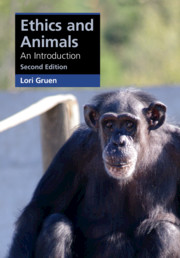Book contents
- Ethics and Animals
- Cambridge Applied Ethics
- Ethics and Animals
- Copyright page
- Contents
- Preface
- Acknowledgments (for the second edition)
- Acknowledgments (for the first edition)
- Abbreviations
- 1 Why Animals Matter
- 2 The Natural and the Normative
- 3 Eating Animals
- 4 Experimenting with Animals
- 5 Dilemmas of Captivity
- 6 Animals in the Wild
- 7 Action for Animals
- References
- Index
- References
References
Published online by Cambridge University Press: 14 August 2021
- Ethics and Animals
- Cambridge Applied Ethics
- Ethics and Animals
- Copyright page
- Contents
- Preface
- Acknowledgments (for the second edition)
- Acknowledgments (for the first edition)
- Abbreviations
- 1 Why Animals Matter
- 2 The Natural and the Normative
- 3 Eating Animals
- 4 Experimenting with Animals
- 5 Dilemmas of Captivity
- 6 Animals in the Wild
- 7 Action for Animals
- References
- Index
- References
Summary

- Type
- Chapter
- Information
- Ethics and AnimalsAn Introduction, pp. 224 - 243Publisher: Cambridge University PressPrint publication year: 2021



